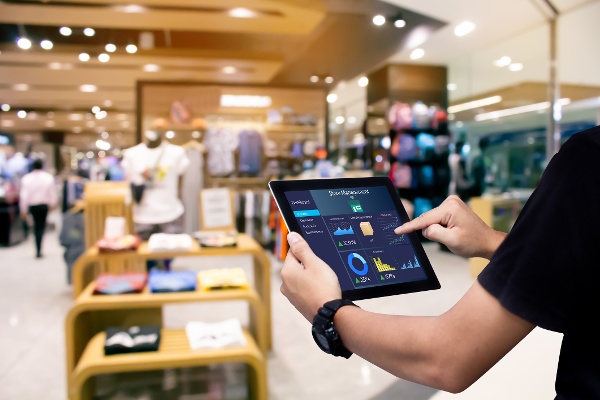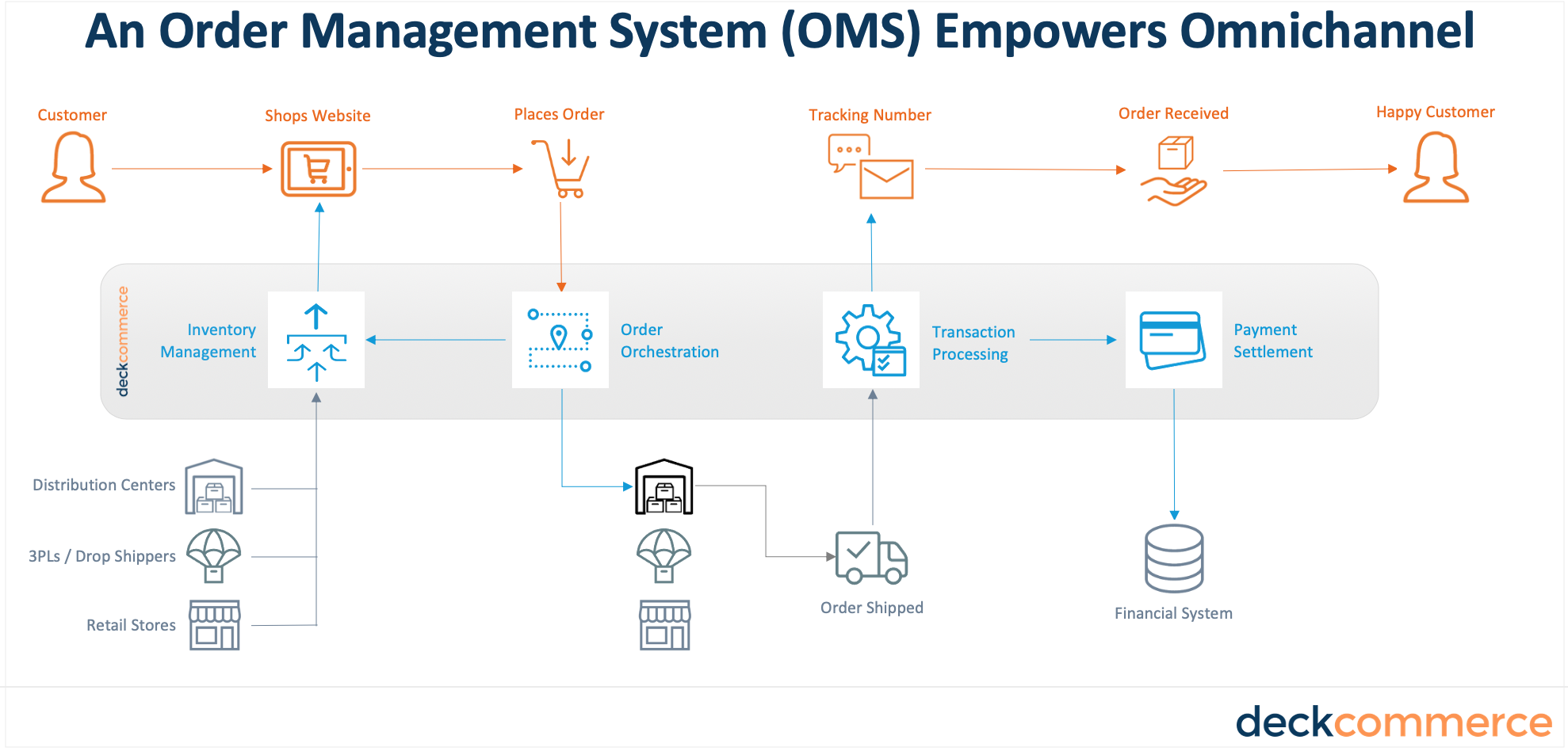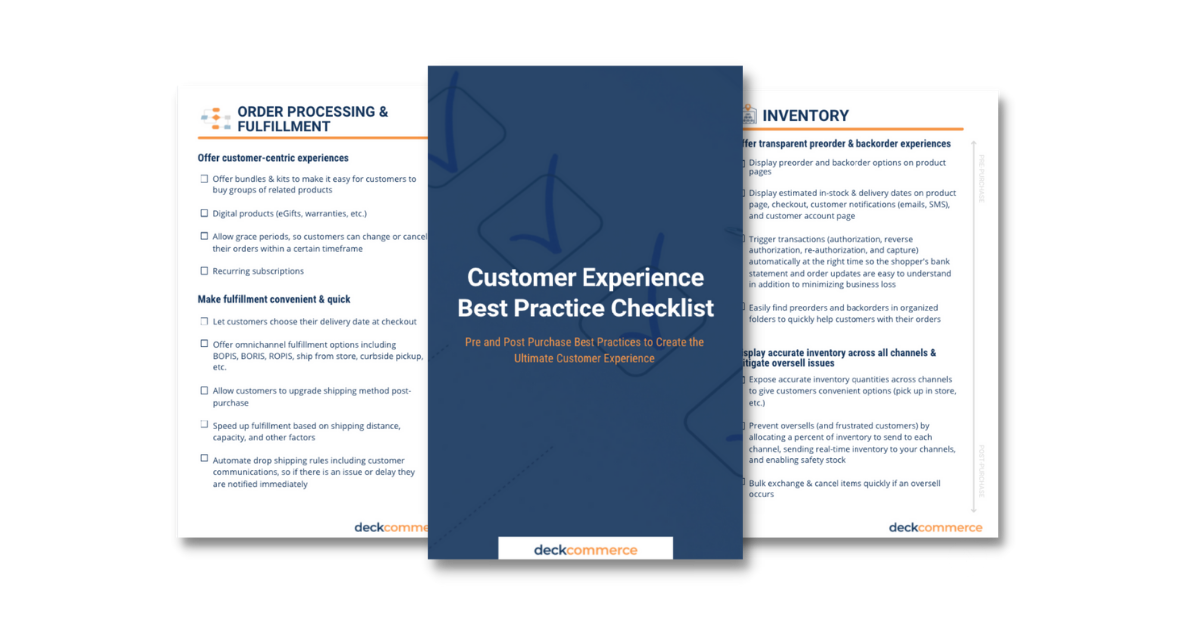Unlocking the Power of Inventory Management for Omnichannel Success

The retail landscape has evolved dramatically over the past decade.
Retailers are no longer just brick-and-mortar stores or online-only entities.
The new wave of retail is omnichannel—seamlessly integrating physical stores with digital shopping.
This post will delve into inventory management's critical role in enabling omnichannel success.
Importance of Inventory Management in Omnichannel Retail
Omnichannel customers expect to browse, shop, and purchase products across multiple channels, in-store, online, or via mobile devices.
Because of this, Inventory management has become a cornerstone of omnichannel retail.
Retailers must know exactly what stock they have, where it is, and how quickly it can reach the customer.
Maintaining a consistent and reliable shopping experience without this vital information is incredibly challenging.
Unified Commerce & Inventory Management
Unified commerce combines all sales channels into one integrated system. This unified approach makes inventory management a lot more straightforward.

As data from Forrester's 2022 survey revealed, significant proportions of consumers in France (41%), the US (37%), and the UK (29%) would reconsider visiting a store if its in-store inventory isn't available online.
With real-time visibility into inventory levels across all channels, brands can avoid common pain points such as
- Customer frustration due to out-of-stock items
- Inaccurate inventory numbers
- Lack of convenient pickup methods
- Dormant inventory
The Role of Omnichannel Retail Solutions in Inventory Management
A sophisticated OMS can be your secret weapon in managing inventory efficiently.
|
IMS Capabilities in OMS |
Impact on Omnichannel Retail |
|
Inventory Visibility |
Expose available-to-sell inventory across all channels to sell more products and prevent "out of stock" messaging. |
|
Inventory Allocation |
Allocate inventory where needed, assigning specific percentages to each channel and setting safety stock. |
|
Inventory Accuracy |
Ensures the display of accurate inventory data on all sales platforms, enhancing the customer shopping experience and reducing the likelihood of order cancellations or modifications. |
|
Integration with Multiple Platforms |
An OMS serves as the primary reference for inventory status, sales updates, and order processing. It provides a unified view of inventory data across all channels and systems, front end to back end. This includes seamless integration with ERPs, selling channels, and Warehouse Management Systems (WMS), ensuring data consistency and reliability across the entire retail operation. |
|
Automated Inventory Updates |
Reduces manual intervention, resulting in fewer errors, improved inventory management, and time efficiency. |
|
Reporting and Analytics |
Provides insights into inventory performance, sales trends, and customer behavior, enabling more strategic decision-making. |
|
Order Fulfillment Flexibility |
Offers various fulfillment options (BOPIS, Curbside, etc.) to meet diverse customer preferences, increasing customer satisfaction and loyalty. |
Here's a closer look at how an OMS can help.
Crystal Clear Inventory Visibility
An OMS provides a clear map of inventory visibility, be it online or in physical stores. This tool helps:
- Display all items for sale, even in-store, like 'Buy Online, Pick Up in Store' (BOPIS).
- Search for inventory in current and nearby stores with ease.
- Showcase different ways to get purchases to customers (shipping to store, BOPIS, etc.), along with estimated delivery times on your online store.
Smarter Inventory Allocation
An OMS allows brands to manage their inventory more effectively by:
- Setting capacity limits at various locations and turning services like 'ship from store' and BOPIS on/off based on capacity.
- Using inventory at any location for different types of orders.
- Identifying which items to promote and where. For instance, if some items need to be sold faster in a warehouse, it can highlight them online to speed up sales.
Inventory Accuracy
Maintaining an accurate inventory count is crucial for smooth business operations.
- Display accurate local inventory for BOPIS and Curbside orders on your online store.
- Ensure accurate inventory data is loaded on marketplaces. This is particularly important for brands shipping into big-box retailers like Walmart to avoid account suspension and costly chargeback fees for non-fulfilled and canceled orders.
The Impact of an Omnichannel Inventory Management System on Customer Service
An Order Management System (OMS) does more than streamline inventory—it is pivotal in enhancing the customer experience. When 92% of consumers abandon brand after just one negative experience, creating a seamless customer experience is paramount.
Let's investigate how an effective OMS can contribute to outstanding customer service in omnichannel retail.
Ensuring Product Availability
When customers shop in-store or online, they expect the products they want to be readily available. An OMS facilitates this by continuously tracking inventory and sales, setting reorder points, and updating information about incoming stock.
This real-time tracking ensures popular items are rarely, if ever, unavailable, thereby minimizing customer frustration and enhancing the overall shopping experience.
Backorder functionality allows customers to place orders even when products are not immediately available. Instead of seeing a discouraging 'out of stock' message, they receive information about when the item will be back in stock and the option to proceed with the purchase.
On the other hand, preorders allow retailers to build excitement and drive sales ahead of a new product launch. By enabling customers to reserve their products in advance, retailers can gauge initial customer response and adjust production or supply chain strategies accordingly.
Synchronizing Inventory Across Channels
Today's consumers shop in a multi-channel environment. They might start browsing products on a mobile app, switch to a desktop website to make the purchase, and finally pick up the product from a physical store. In such a scenario, real-time inventory synchronization across channels, facilitated by an OMS, is crucial.
When the inventory is in sync, it prevents situations like selling a product online that's out of stock in the physical store, thereby ensuring a seamless and consistent shopping experience.
Accelerating Product Delivery
With the growing trend of instant gratification, customers expect their orders to be fulfilled and delivered as quickly as possible. An OMS plays a vital role here by intelligently routing orders based on the inventory spread across different channels.
You can provide faster delivery times and boost customer satisfaction by offering customers options like Buy Online, Pick Up in Store (BOPIS), or curbside pickup.
To take it a step further, an OMS can provide an estimated delivery date on the storefront to better set expectations.
Managing Expectations with Accurate Information
Nothing disappoints a customer more than placing an order and then learning it can't be fulfilled due to inventory discrepancies.
An effective OMS maintains accurate inventory data across all sales channels, which helps set realistic customer expectations right from the ordering stage. This transparency goes a long way in building trust and fostering long-term customer relationships.
6 Reasons to Consider Omnichannel Inventory Management Software an OMS Provides
Deck Commerce was built to be the driving force behind a retailer's omnichannel success.
- Order Orchestration: Leverage Deck Commerce's advanced order routing and distributed order management (DOM) to fulfill orders from the best location at the best cost— with limited manual processing.
- Inventory Visibility and Accuracy: The system provides a real-time, comprehensive view of inventory across all channels and locations. This transparency helps retailers make informed decisions regarding stock replenishment, pricing strategies, and promotional activities. It also ensures customers receive accurate information about product availability and delivery times, enhancing their shopping experience.
- Centralized Customer Service: Deck Commerce centralizes all customer interactions, regardless of the channel, into a single system. This enables consistent, high-quality customer service and allows retailers to foster stronger customer relationships. It also empowers customer service teams to handle queries, returns, and exchanges more effectively through task automation, reducing call times and improving customer relationships.
- Seamless Integrations: Deck Commerce can seamlessly integrate with existing technology stacks, including eCommerce platforms, ERPs, POS systems, and logistics providers. This streamlines business operations and allows for more efficient data flow across different systems.
- Scalability: Deck Commerce is built to scale with your business, accommodating growth in sales volume and channels without sacrificing performance. This means retailers can expand their omnichannel strategies confidently, knowing their OMS can handle increased complexity and demand.
- Actionable Insights: Deck Commerce provides valuable reporting and analytics capabilities. These insights help retailers forecast demand, identify trends, monitor performance, and make strategic decisions that contribute to omnichannel success.
Deck Commerce OMS combines robust functionality, flexibility, and scalability to help retailers meet evolving customer expectations and achieve omnichannel success.
If you’re interested in expanding your OMS capabilities to further increase your inventory visibility or supporting omnichannel fulfillment, we can help you get there. Schedule a demo today to see how we can help launch your omnichannel initiatives in as little as four weeks.


